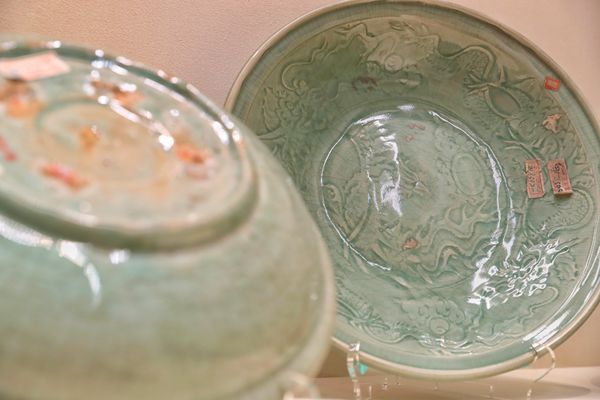 |
|
Two Ming-Dynasty Longquan celadon plates collected by the Palace Museum.[Photo by Jiang Dong/China Daily] |
"Celadon" soon entered Western vocabularies as a term for jade-green glazed porcelain ware.
Booming outward trade not only brought huge wealth to China, but also built up a trade network that linked the Chinese economy with the rest of the world, says Chen Shuihua, director of the Zhejiang Provincial Museum and the co-curator of the exhibition.
About 300 heritage sites belonging to the Longquan Kilns were found along the Oujiang River, and archaeologists soon discovered a common trend: Production hubs gradually sprang up downstream toward the coastline in order to better facilitate export.
"Consequently, the manufacturing processes behind celadon were a microcosm of the early stages of globalization," Chen says.
And it wasn't just products that were exported, Chen notes. The techniques used in the kilns of Longquan also spread overseas amid the global frenzy for celadon.
Since the 12th century, local products that were copies of Longquan celadon popped up in several countries along the trade routes starting with China's neighbors like Japan and Vietnam, and moving onto Iran, Turkey and Egypt-and eventually all the way to Britain. Some typical examples of these are also on display at the exhibition in Beijing.
"For a very long period of history, celadon and its production methods were the conduit for Sino-foreign exchanges both in commercial and cultural terms," Chen says. "We have found a great deal of physical evidence to support that statement."
In 2012, a national-level academic program called Compass was initiated by the National Administration of Cultural Heritage to conduct a study into the overseas influences on Chinese celadon. A series of overseas research programs were launched to retrace the steps of this long odyssey, and a number of discoveries were selected for display.